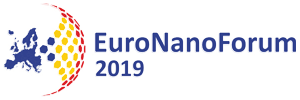Best posters
Best poster NMBP
Best poster NMBP
P005. Towards novel exposure and risk assessment techniques for nanomaterials, Panagiotis – Theodoros Karagiannis, Innovation in Research & Engineering Solutions (IRES), Greece
Abstract: Nanotechnology exhibits rapid growth in research, manufacturing and commercial aspects, however uncertainties and information gaps that emerge as a byproduct of such an expeditious technological advance present significant barriers to nanomaterial risk assessment. A continuously growing body of research work demonstrates that manufacture, handling, process and use of nanomaterials may present considerable hazards. Therefore, the development of refined risk assessment strategies is crucial. Evaluating the progress achieved in nanomaterial risk assessment in recent years, we initiated development of a dedicated nano-risk assessment tool. Our approach employs a highly targeted analysis in specific aspects of the risk assessment procedure. The system introduces a detailed scheme of scoring hazardous properties and a specialized exposure assessment methodology, utilizing computational modeling and simulation methods that provide exposure scenario details. If judiciously used, process specific simulated exposure assessments can aid in the optimization of the spatial design of nanomaterial workplaces, and inform on the anticipated effectiveness of control measures. Such a system can also provide insight on the establishment of efficient evacuation plans for areas prone to severe contamination. As such, the groundwork for developing Safe-by-Design nanomaterial processes can be provided and the supplied data can serve as a valuable tool in decision making processes.
Best student poster
Best student poster
S011. Microfluidic glass biochip fabricated by picosecond laser assisted etching for controlled release of biomolecules, Cristina Stefana Orobeti, Center for Advanced Laser Technologies (CETAL), National Institute for Laser, Plasma and Radiation Physics (INFLPR), Romania
Abstract: Various material processing techniques have been proposed for the fabrication of smart interfaces to modulate cellular behaviour and address specific clinical issues. Particularly, laser-based technologies have attracted growing interest due to processing versatility. Latest development of ultrashort pulse lasers with pulse widths of several tens of femtosecond (fs) to several picoseconds (ps) allows fast and clean micro-fabrication of a variety of materials at micro- and nano-scale both at surface and inside volume. High quality micro-channels embedded in photosensitive glass can be successfully generated by ultrafast laser-assisted etching. We propose here a novel microfluidic glass biochip fabricated by picosecond laser assisted etching (PLAE). This has a splitter configuration consisting of a distributor reservoir connected to three collecting reservoirs via channels of various dimensions distributing different flow rates. The potential of fibroblast growth factor (FGF2) to prevent or treat bone degeneration was assessed using an “in vitro” model of osteogenesis. Using the microfluidic biochip we tested the effect of perfusing different controlled doses of FGF2, thereby creating a miniature platform for therapeutic testing allowing identification of optimal dosages and development of temporal administration protocols. These findings could guide the design of novel therapeutic strategies for treating spaceflight osteopenia or osteoporosis;
Best H2020/NMBP Project
Best H2020/NMBP Project
H2020-GIOTTO: H06. Active aGeIng and Osteoporosis, the next challenge for smarT nanobiOmaterials and 3D technologies, Issela Vicini, Warrant Hub S.p.A., Italy
Abstract: Osteoporosis (“porous bone”) is a very common bone disease. It occurs when the body loses too much bone, as a result bones become so weak and brittle that a fall or even mild stresses can cause a fracture. The GIOTTO project is funded by the European Union under the Horizon 2020 research and innovation programme (grant agreement n 814410), call H2020-NMBP-TR-IND-2018-2020 (TRANSFORMING EUROPEAN INDUSTRY), and it will exploit the most recent materials and manufacturing technological advancements to help healthcare systems fight the consequences of bone fractures caused by osteoporosis. Medical doctors will work together with scientists and medical device producers to develop and test new solutions based on cutting edge technologies such as 3D printing and smart nano-biomaterials. Ad hoc devices will be designed for the different types of osteoporotic fractures stimulating bone regeneration while reducing bone loss. In addition to 3D-printing and the most updated technologies for bone scaffold manufacturing, also the most advanced technologies will be put in place such as the nano-functionalisation for the smart release of active molecules.




